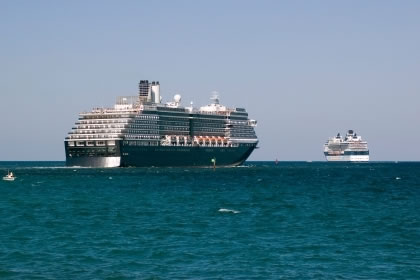China certainly knows how to throw a party. Most times of the year you’ll find the locals celebrating one of their many annual festivals. The country’s cities regularly explode in a rainbow of colors and sounds, and the locals love it when tourists join in the fun. That’s perfect for frugal travelers, as most of the entertainment is free or close to it! In this article, we reveal the ways this Asian travel hub celebrates.
China’s festival calendar kicks off in late January or early February with its most important celebration, Chinese New Year. While the festival technically runs for 15 days from the eve of Chinese New Year, the festivities are concentrated in the first two days of the event. At this time parades fill the city streets and fireworks light up the night skies. Families feast on pigs, chicken, ducks, and sweet treats. As it’s based on the lunar calendar dates vary, but in 2013 Chinese New Year falls on January 23.
You’re not left waiting too long for more fun; the Spring Lantern Festival begins on the final day of Chinese New Year celebrations. Cities string up brightly colored lanterns to commemorate the changing of the season, and children make paper versions to parade down the streets. It’s also known as Chinese Valentine’s Day, but as the event is so family-focused most lovebirds don’t get much time for romance!
In early April it’s time for the Ching Ming Festival, a sombre but beautiful event that pays tribute to relatives passed. Chinese people generally don’t visit cemeteries, so it’s quite an occasion when the festival rolls around. Families sweep their ancestral graves clean and leave offerings for the dearly departed, including food, burning incense and joss sticks.
Later in April, or in early May depending on the lunar calendar, the Chinese pay tribute to the protector of fishermen on Tin Hau’s birthday. Streamers and pennants decorate hundreds of boats in China’s harbors. They make their way to the country’s Tin Hau temples and pray to the goddess of the sea for lucky catches in the coming year. It’s quite a sight to see these brightly embellished vessels making their journey!
May’s Cheung Chau Bun Festival is one of the country’s most unusual. Cheung Chau is only a small island, but thousands visit every year for the festivities. The event began during the late Qing dynasty, when locals prayed to the god Pak Tai and created statues of deities to rid their city of a plague. It seemed to work, and the locals have repeated the rituals ever since! How the festival’s highlight, a scramble to the top of a tall tower of buns, came to be though, we might never know!
With an estimated 80% of Chinese people practicing Buddhism, it’s unsurprising that Buddha’s birthday is also honored. It’s not the country’s most colorful festival; little happens beyond the annual bathing of the Buddha statues at China’s temples. But it is a national public holiday!
The energy level picks up in June when the country hosts its annual Dragon Boat Festival. Elaborately decorated dragon boats go head to head over three intense days of competition. Spectators cheer the rowers on from the shore, typically with a beer in hand!
In August, China celebrates the Hungry Ghost Festival, a spookier version of the Western Halloween. The Chinese believe restless ghosts roam the earth during the seventh month of the lunar calendar. They do their best to placate the spirits by leaving food for them, burning Hell Bank Notes and paper iPhones, and performing traditional operas.
In September it’s time for the Mid-Autumn festival, celebrations that are second in scale only to Chinese New Year. As well as a chance to pay homage to the new season, it also commemorates the time when China overthrew its Mongolian dictators. Lanterns decorate the cities and brightly colored dragons dance down the streets. Make sure you try the moon cakes, a special pastry filled with salted duck eggs. Tourists don’t always know what to make of them, but they’re a Chinese favorite!

A traditional lion dancer at Chinese New Year celebrations
The Cheung Yeung Festival in October rounds out China’s annual celebrations. It’s dubbed the hiking holiday after a folk story about an old man saved from death by hiking to higher ground. Join the locals trekking China’s hills to burn offerings in his honor.
No matter when you visit China, it’s the right time to have fun at one of its famous festivals.
